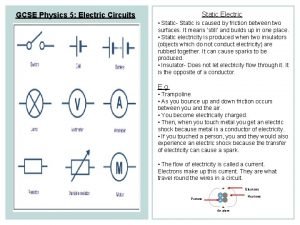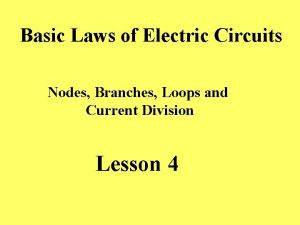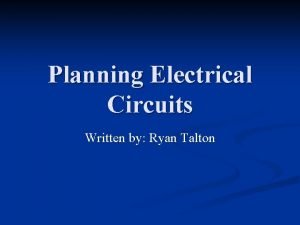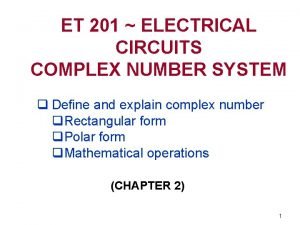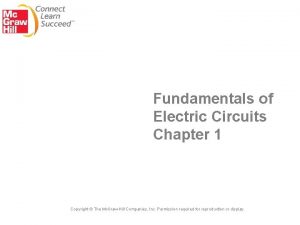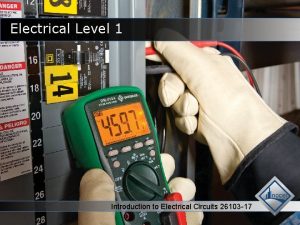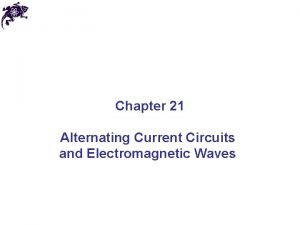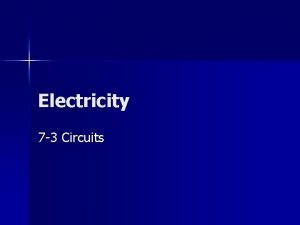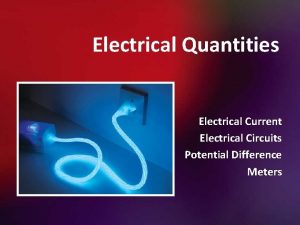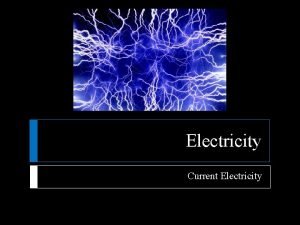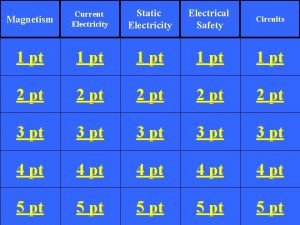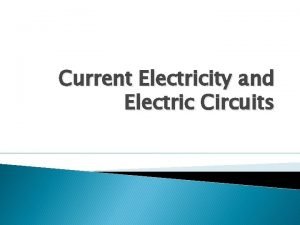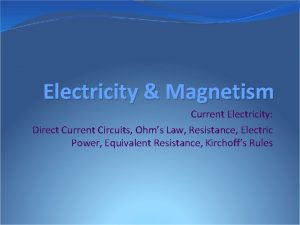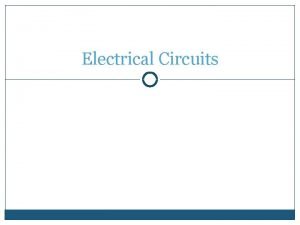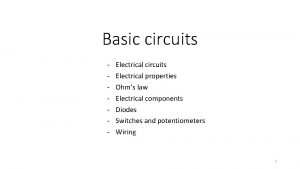Current Electricity What is Current Electricity Electrical Circuits












- Slides: 12

Current Electricity What is Current Electricity? Electrical Circuits Electrochemical Cells Wet, Dry and Fuel Cells

Current Electricity – continuous flow of electrons in a closed circuit A flow of electrons moves continuously as long as there is: 1. An energy source 2. A complete path

Electrical Circuits Circuit = complete path of electron flow Parts of a Circuit: Energy source Conductor Load * Switch Electrons flow from negative to positive

Functions of the Parts of a Circuit: • Energy source – provides energy for the electrons in the circuit • Conductor – wires that carry the current (electrons) around the circuit • Load – converts the electrical energy carried by the electrons to a useful form (light, heat, movement) • * Switch – controls when the electricity can flow (not a necessary part of the circuit

Electrochemical Cells Electrochemical Cell = a pack of chemicals that converts chemical energy into electrical energy that is stored in charged particles A battery is a combination of electrochemical cells

Electrochemical cells include: 1 Electrolyte Liquid or paste that conducts electricity Contains chemicals that form ions Ex. Citric acid 2 Electrodes Metal strips that react Ex. Zinc and Copper with the electrolyte Reaction electrons collect on one of the electrodes (- charge), and electrons are lost from the other electrode (+ charge)

Types of Electrochemical Cells 1. 2. 3. Wet Dry Fuel

Wet Cells = an electrochemical cell that has a liquid electrolyte Example: Car battery

Dry Cells = an electrochemical cell that has a paste electrolyte Example: Simple batteries

Fuel Cells = an electrochemical cell that generates electricity directly from a chemical reaction with fuel Example: Electric Car Battery

Why Do Batteries Die? When the chemicals in a battery are used up the battery dies. Batteries should always be recycled because they contain many harmful chemicals such as mercury, lead and cadmium. Rechargeable Batteries have chemical reactions that can be reversed with an input of energy.

Homework A. B. Questions 1 -5 pg. 436 Handouts The Wet Cell
 Electricity n
Electricity n Electricity and magnetism vocabulary
Electricity and magnetism vocabulary Static electricity and current electricity
Static electricity and current electricity Advantages of parallel circuits over series circuit
Advantages of parallel circuits over series circuit Electrical circuits gcse
Electrical circuits gcse What is a node in electrical circuits
What is a node in electrical circuits Planning electrical circuits
Planning electrical circuits 14-13
14-13 Types of elements in electrical circuits
Types of elements in electrical circuits Nccer introduction to electrical circuits
Nccer introduction to electrical circuits Types of electrical circuits
Types of electrical circuits Alternating current circuits and electromagnetic waves
Alternating current circuits and electromagnetic waves Circuits ohm's law worksheet answers
Circuits ohm's law worksheet answers




